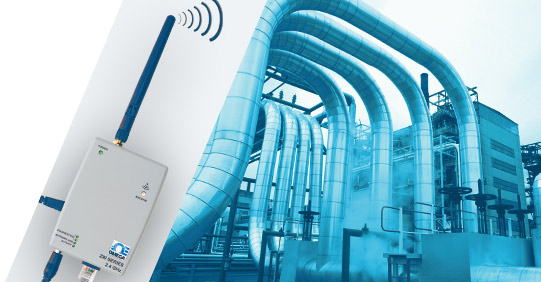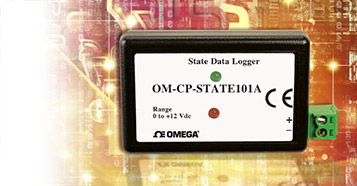Introduction
With the massive fanfare of the IoT or Internet of Things, its derivatives often miss the spotlight. IIoT or Industrial Internet of Things is one such technology that is well-known among industry experts but mostly unknown to the rest. In this article, we are going to help you understand IIoT in detail and how it differs from IoT.
IIoT – Industrial Internet of Things
IIoT is the internet of things implemented in industries. However, it is not as simple as the definition. The IoT that we know and understand is primarily designed around the requirements of our home. IIoT is focus on the industries that deals with sensor or instrumentation that generated machine data that are used to monitor operational processes. These large amount of data generated will later be used in analytics to improve and optimize industry operations.
How is IIoT Designed for Industries?
For a long time, industries while have become highly advance and sophisticated; were mostly operating in an on-premise model without inter-connectivity within and outside the facility. Connectivity to and with disparate systems, make the transition to IIoT slower than expected. Traditional industry communication protocol and new internet based protocol are not compatible with each other. With a hybrid approach and protocol translation, IIoT is on track to gain momentum in the coming years.
So, what is IIoT? Let us look at some of the components that make up IIoT.
Smart Machines
Machines are an integral part of any manufacturing or processing industry. Ordinary machines are programmed to do one thing, and they do it with high efficiency. Smart machines are an improvement over regular machines as they can communicate with other machines.
Machines with connectivity to a network can now send data about how well they are performing and if any part of it is undergoing undulating stress.
Sensors
IIoT Sensors detect the changes in the physical environment and convert them into electrical signals. These electrical signals are the data that helps us understand the physical quantity measured by the sensor.
Infrastructure
The infrastructure concerning connecting IIoT is the network through which all the digital-communication happens. A speedy, reliable and secure communication platform ensure data collected from the sensor can be stored and analyzed anytime and anywhere. A cloud enable IIoT infrastructure brings together the machine and it’s data a common platform where higher order data or advance analytics can be processed.
What Benefits Does IIoT Bring to Industries?
Any new technology is ineffective if it fails to bring real-world benefits to the industry. IIoT is only useful if it can bring something new to industries and justify the time and money that enterprises spend to incorporate the technology.
However, the benefits that it brought has completely changed that perspective. Estimates suggest that by 2025, the IIoT market size is going to reach USD 949.42 billion. This growth puts IIoT among the list of fastest-growing markets in recent history.
Improving Efficiency
Efficiency is the result created by an entity per effort. More results for the same effort increases the efficiency factor. Another way of increasing productivity is by minimizing losses (money, time, and energy). IIoT helps industries to raise their efficiency levels by optimizing existing processes. With the help of smart machines and sensors, the user now has complete knowledge of how well the machine works.
By knowing how the machine uses energy, it is possible to avoid unnecessary costs while improving core functions. Smart machines can relay the complete details on how they work, how much time they were active, and the time frames where they faced disruptions.
Predictive Maintenance
Maintenance causes massive headaches to the industries as these are times when the machinery undergoes repair. It means they cannot contribute to the work cycle. With each passing minute, the company faces losses. Serious issues with the machine will leave the company scrambling to get the production rates to meet the demand.
Predictive maintenance is the process where the repairs are made on the machinery while it shows signs of failure rather than waiting for the equipment to fail. In other words, the machines get repaired even before they fail. The advantage of predictive maintenance is that the chance of the machinery going entirely out of commission can be mitigated.
Sensors provide valuable data on the level of whereabouts of the machine on a scale that wasn’t even possible with traditional machines.
Increasing Uptime
One of the advantages of machines working well around the clock is that the company can maintain longer uptime. It is a straightforward logic that when machines work for longer, the higher the productivity. Companies are trying to increase uptime in various ways, and IIoT provides them with a more intuitive way to do so through machine monitoring and predictive maintenance. The ultimate goal is to keep the factory or industry working at high-efficiency without causing critical failures to the machinery.
 CLOSE
CLOSE


 High-value assets such as aerospace systems must be monitored and protected while in transit to the final assembly location...
High-value assets such as aerospace systems must be monitored and protected while in transit to the final assembly location...
 Recording temperature in freezers is important in the storage of blood plasma, vaccines, pharmaceuticals...
Recording temperature in freezers is important in the storage of blood plasma, vaccines, pharmaceuticals...
 Understanding the principles of how they operate is vitally important when selecting a data logger for your application.
Understanding the principles of how they operate is vitally important when selecting a data logger for your application.